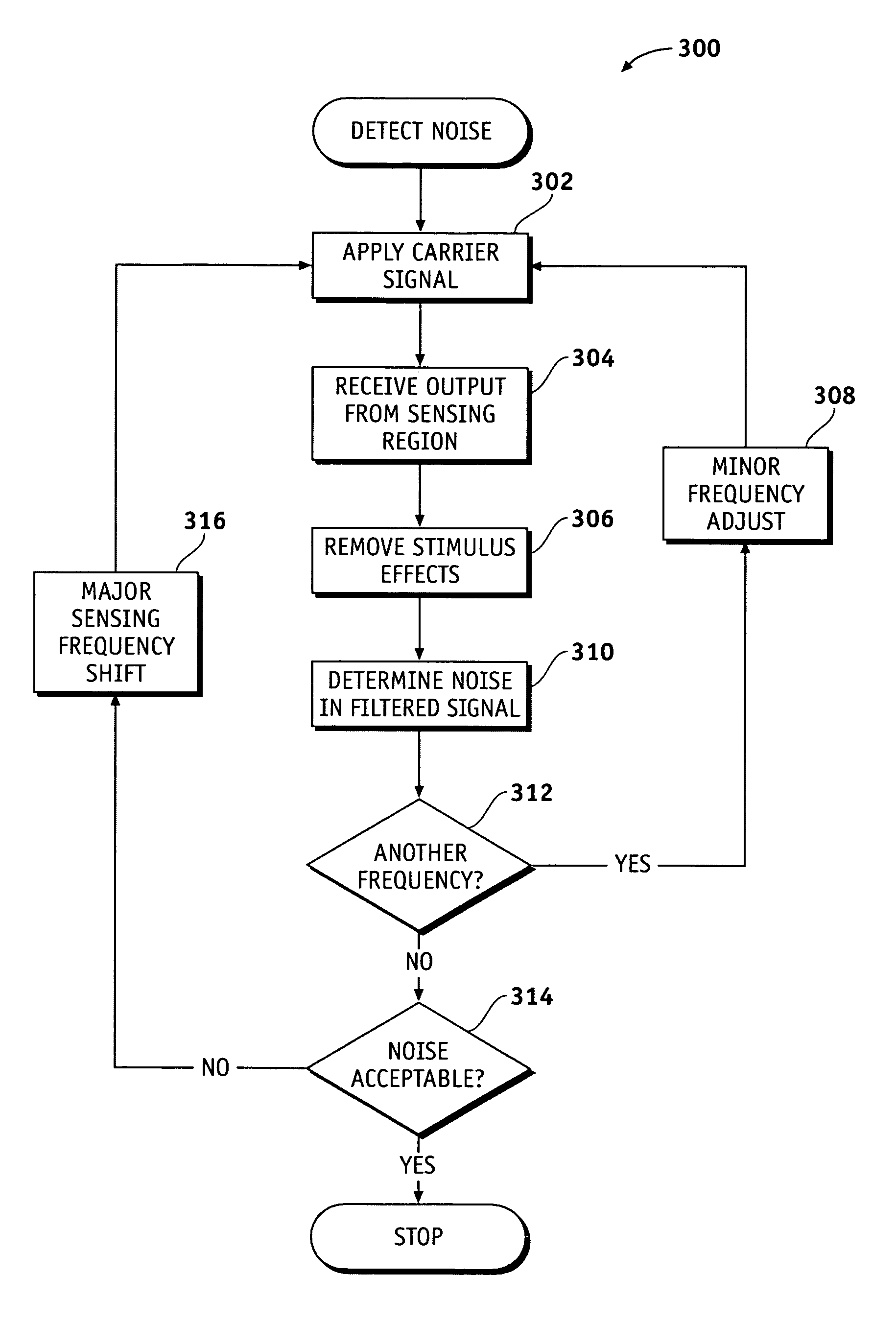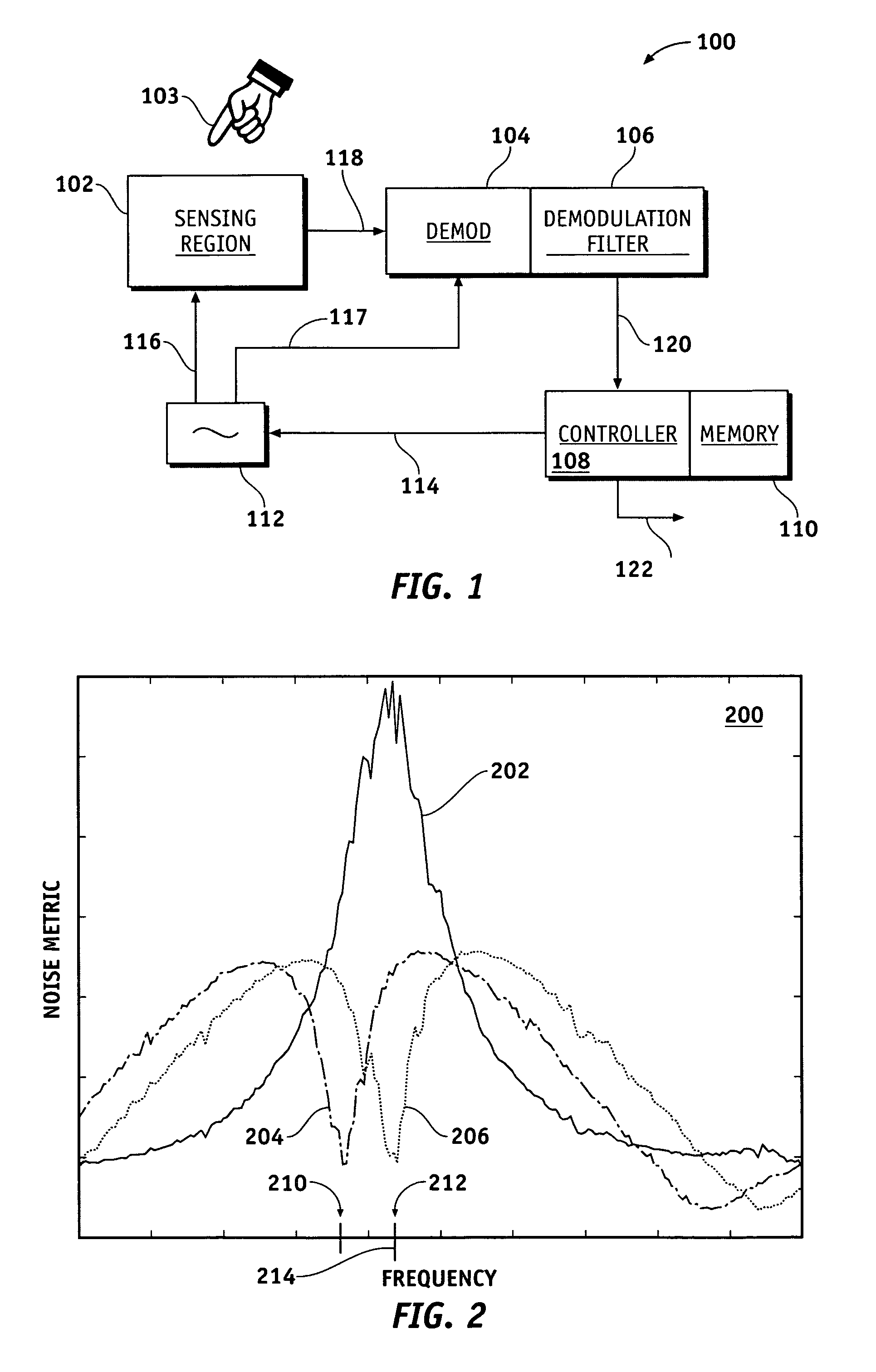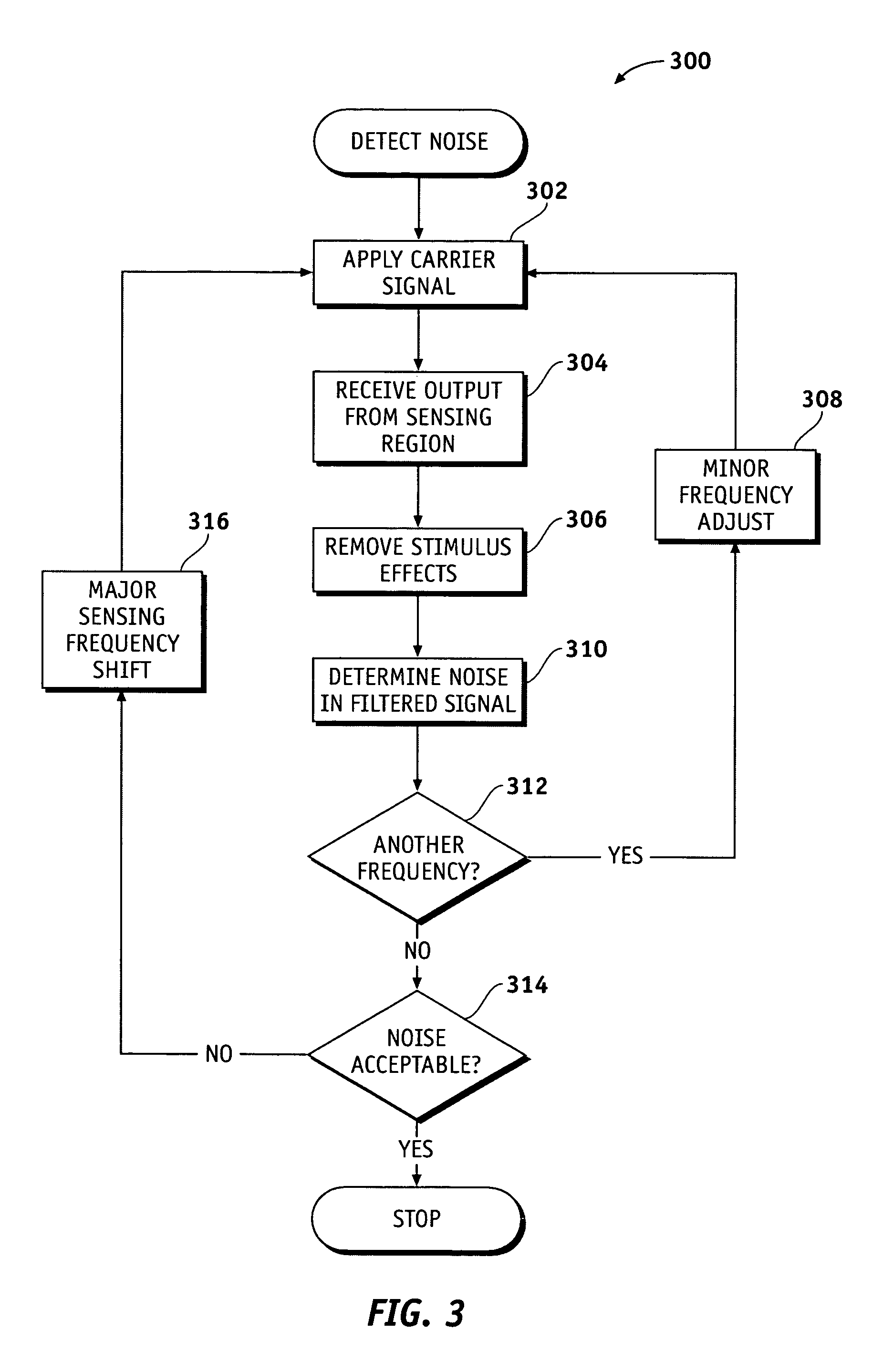Methods and systems for detecting noise in a position sensor using minor shifts in sensing frequency
a technology of position sensor and sensing frequency, applied in the field of methods, can solve the problems of long-term problems in identifying and reducing the effect of noise on the sensor, difficult to identify or filter out, and difficult to remove noise components
- Summary
- Abstract
- Description
- Claims
- Application Information
AI Technical Summary
Benefits of technology
Problems solved by technology
Method used
Image
Examples
Embodiment Construction
[0012]The following detailed description is merely exemplary in nature and is not intended to limit the invention or the application and uses of the invention. Furthermore, there is no intention to be bound by any expressed or implied theory presented in the preceding technical field, background, brief summary or the following detailed description.
[0013]According to various exemplary embodiments, a carrier signal having one of two or more closely spaced sensing frequencies is applied to a carrier modulating sensor, demodulated, filtered, and analyzed for noise. The same procedure is then applied for the remaining closely-spaced frequencies. The sensing frequencies are chosen such that they are spaced within the bandwidth of the demodulation filter but greater than the expected bandwidth of the stimulus. Regardless of the frequency of the applied carrier signal, the frequency bandwidth of the demodulated stimulus is mostly invariant, but the frequency band of the demodulated noise ch...
PUM
 Login to View More
Login to View More Abstract
Description
Claims
Application Information
 Login to View More
Login to View More - R&D
- Intellectual Property
- Life Sciences
- Materials
- Tech Scout
- Unparalleled Data Quality
- Higher Quality Content
- 60% Fewer Hallucinations
Browse by: Latest US Patents, China's latest patents, Technical Efficacy Thesaurus, Application Domain, Technology Topic, Popular Technical Reports.
© 2025 PatSnap. All rights reserved.Legal|Privacy policy|Modern Slavery Act Transparency Statement|Sitemap|About US| Contact US: help@patsnap.com



